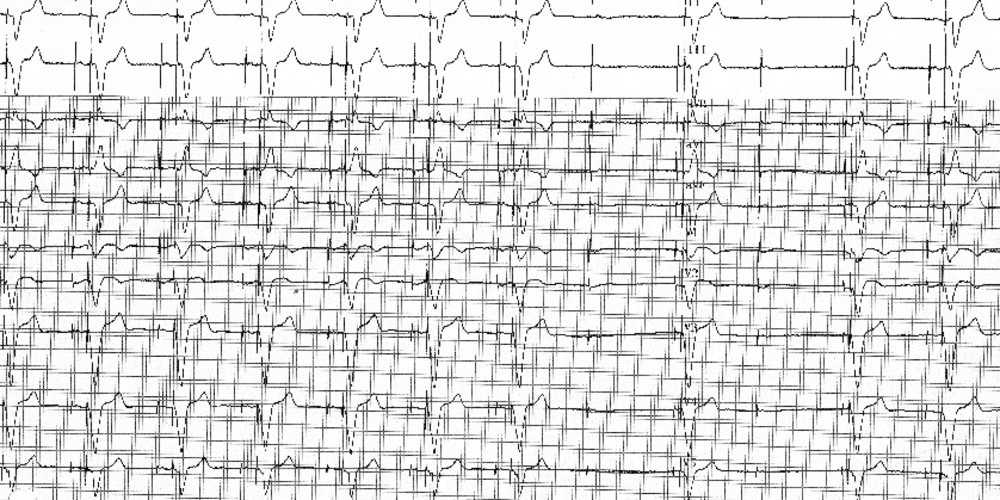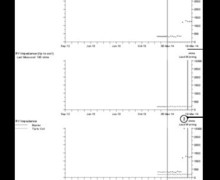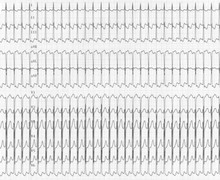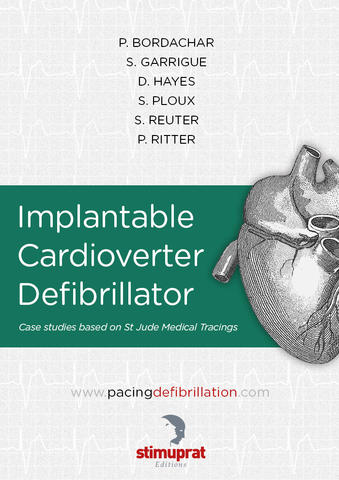MVP and dropped P-waves
Tracing
Manufacturer Medtronic
Device PM
Field MVP
N° 2
Patient
- 67-year-old man
- Dual-chamber pacemaker (Medtronic) for complete atrioventricular block
- DDD mode

Graph and trace
Tracing 2a: 12 lead ECG
- DDD mode: atrial pacing and ventricular pacing
- Programming of the MVP mode: atrial pacing not followed by a ventricular sensed event (first dropped atrial activity)
- On the following cycle, atrial pacing and ventricular pacing with a short AV delay (80 ms)
- Identical sequence: atrial pacing not followed by a ventricular sensed event, atrial pacing and ventricular pacing with a short AV delay
- No ventricular sensed event in 2 of 4 preceding A-A intervals: automatic switch to DDD mode
Tracing 2b: EGM
- Programming of the MVP mode
- After a blocked atrial pacing, short AV delay (80 ms) on the following cycle
Comments
- This tracing shows the specificities of the operation of the first version of the MVP mode in a patient with atrioventricular block
- This algorithm tolerates the presence of intermittent dropped P-waves; a single dropped P wave does not induce switching to DDD
- The short AV delay (80 ms) with safety ventricular pacing on the cycle following the dropped atrial activity is the signature feature of this mode
- There cannot be two consecutive dropped atrial activities
- There is a single criterion for switching to the DDD mode; the device automatically switches from AAI to DDD mode, when no ventricular sensed event occurs in 2 of 4 preceding A-A intervals
- The maximal duration of the ventricular pause depends on the sinus rate and on the programmed lower rate limit (more or less equal to half the programmed minimal rate)
Other articles that may be of interest to you






